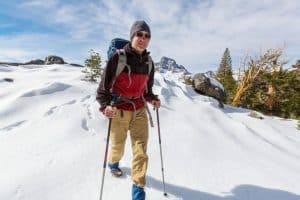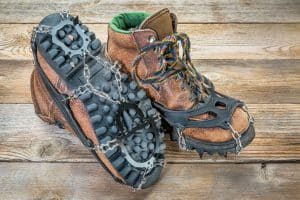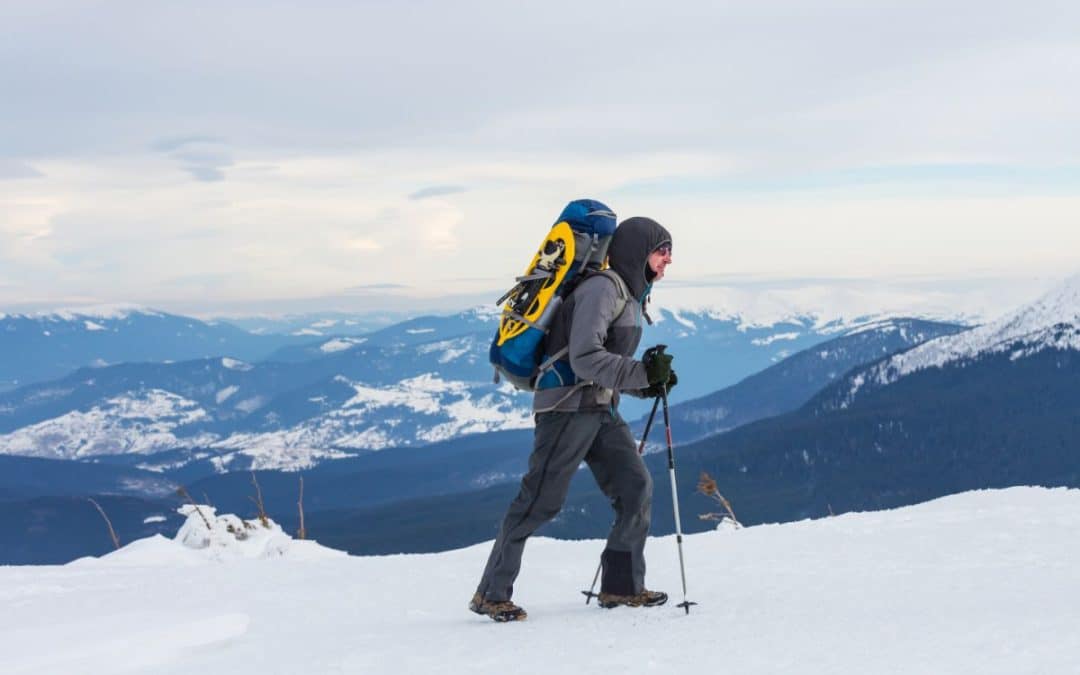Colder temperatures does not mean giving up hiking until the summer – all you need is the right winter hiking gear to get you back out there no matter what the weather brings.
Winter hiking presents a unique and invigorating experience to outdoor enthusiasts, allowing you to explore the serene beauty of snow-covered landscapes that you miss in the warmer summer months. Hiking in winter, particularly in the picturesque settings of Colorado, offers a blend of tranquility, beauty, and adventure.
However, equipping yourself with the right winter hiking gear is vital to ensuring a safe and comfortable experience.
This blog will explain some of the essential pieces of winter hiking gear and where you can find the highest-quality second-hand equipment on the Front Range.
Why Winter Hiking in Colorado?
Colorado’s winter landscape is nothing short of breathtaking. From the snow-draped Rocky Mountains to the frosty forests, winter hiking in Colorado unveils a magical realm of peace and solitude that many hikers miss during summer. And you might even catch a peak of unique winter wildlife and tundra that are missing from the warmer weather landscape.
You Might Like: Best Winter Camping Destinations Near Colorado Springs

Essential Winter Hiking Gear
The key to a successful winter hike lies in the right gear. Here are some essentials you should consider:
Layered Clothing
The first consideration for winter hiking gear is proper layering of clothes.
Base Layer
Your base layer serves as the first line of defense against the cold by trapping a thin layer of heat against your body and wicking away moisture if you begin to sweat. Synthetic materials or merino wool are ideal as they are both moisture-wicking and quick-drying. Cotton is not the best choice for your base layer due to the fabric retaining moisture, thus losing the insulating properties when wet.
Mid Layer
The mid layer provides the bulk of your insulation, trapping your body heat to keep you warm. Common mid layers include down or synthetic puffy jackets. You can also use a combination of a fleece and a light puffy jacket, allowing you to adjust your clothing as your body temperature changes throughout your hike.
Outer Layer
The outer layer, also known as the shell layer, protects you from external elements like wind, rain, and snow. This layer should be waterproof and windproof, and large enough to accommodate your mid-layer comfortably.
Related: The Ultimate Guide to Choosing the Best Winter Jacket for Mountain Sports
Cold Weather Footwear
Keeping your feet warm and dry during a winter hiking trek is essential to not only your comfort but also your safety. To prevent cold toes and frost-bite, opt for the following three essential pieces of winter hiking gear.
Waterproof Boots
Invest in a pair of insulated, waterproof hiking boots. These boots not only keep your feet dry but also provide the necessary traction for slippery and icy trails.
Wool Socks
For winter hiking, wool socks are preferred over cotton ones for the same reasons that you do not want a cotton base-layer of clothing. Wool socks provide better insulation and wick moisture away from your skin, keeping your feet dry and warm.
Gaiters
Gaiters are protective garments that cover the upper boot and lower part of your pants. They prevent snow, water, and debris from getting into your boots.

Winter Hiking Accessories
Next, give attention to your extremities and your head. Any exposed skin during a winter trek can result in a loss of body heat, so you need winter hiking gear that will protect these vulnerable areas.
Gloves and Mittens
Your hands are one of the first body parts to feel the cold. Therefore, investing in quality gloves or mittens is essential. Consider carrying an extra pair in case one gets wet.
Hats and Headbands
Wearing a hat or a headband can help keep your body temperature up. And you will notice a trend in this post – yes, hats and headbands made of wool or other synthetic materials will offer better insulation than cotton.
Sunglasses or Goggles
Winter hiking often involves dealing with glare from the snow, which can strain your eyes. Good quality polarized sunglasses or goggles can help reduce this glare and protect your eyes.
Looking for a great place to hike this winter? Check out our post Best Fall Hikes in Colorado Springs to Experience Colorful Foliage. You may just find the beauty of the fall eclipsed by the winter vistas.
Other Winter Hiking Gear
While the above may be considered essential winter hiking gear, there are several other things you may want to invest in to make your hike as enjoyable as possible.
Backpack
A good backpack should be able to carry all your gear, including food, water, and extra clothing. For winter hiking, a 35-60L backpack is usually sufficient.
Traction Devices
Traction devices like microspikes or crampons can be fitted onto your boots to provide extra grip on icy or snowy trails.

Trekking Poles
Likewise, trekking poles offer additional stability and balance on slippery winter trails. (If you’re using them in the snow, remember to attach snow baskets to prevent them from sinking into the snow.)
Navigation Tools
Always carry a map and compass with you. While GPS devices and smartphones are useful, they can run out of battery or lose signal in remote areas, or may not work properly in extreme temperatures. A map and compass are reliable, low-tech tools that can help you navigate the trails.
Hydration and Nutrition
Staying hydrated and well-nourished is crucial during winter hikes. Carry an insulated water bottle or hydration reservoir to prevent your water from freezing. Also, pack high-calorie snacks and meals to replenish energy.
First Aid Kit
A basic first aid kit is a must-have on any hike. At a minimum, the kit should include bandages, antiseptic wipes, tweezers, medical tape, pain relievers, and any personal medication you may need.
Emergency Shelter
Carry a lightweight emergency shelter like a bivy sack or a tarp. In case of unexpected weather changes or if you get lost, an emergency shelter can provide critical protection from the elements.
MER – Your One Source for Affordable and Sustainable Winter Hiking Gear
Winter hiking in Colorado is a remarkable experience, but a good hike in any weather requires proper preparation and the right gear. By adhering to this winter hiking gear guide, you can ensure a safe and enjoyable winter adventure. At MER we specialize in providing quality used outdoor gear, perfect for all your winter hiking needs.
And shopping at MER not only supports your outdoor adventures on a budget but also contributes to a greater cause, supporting local non-profit charity organizations.
Visit our store in Colorado Springs today and gear up for your next winter hike.
MER. Great Gear. Greater Cause.

